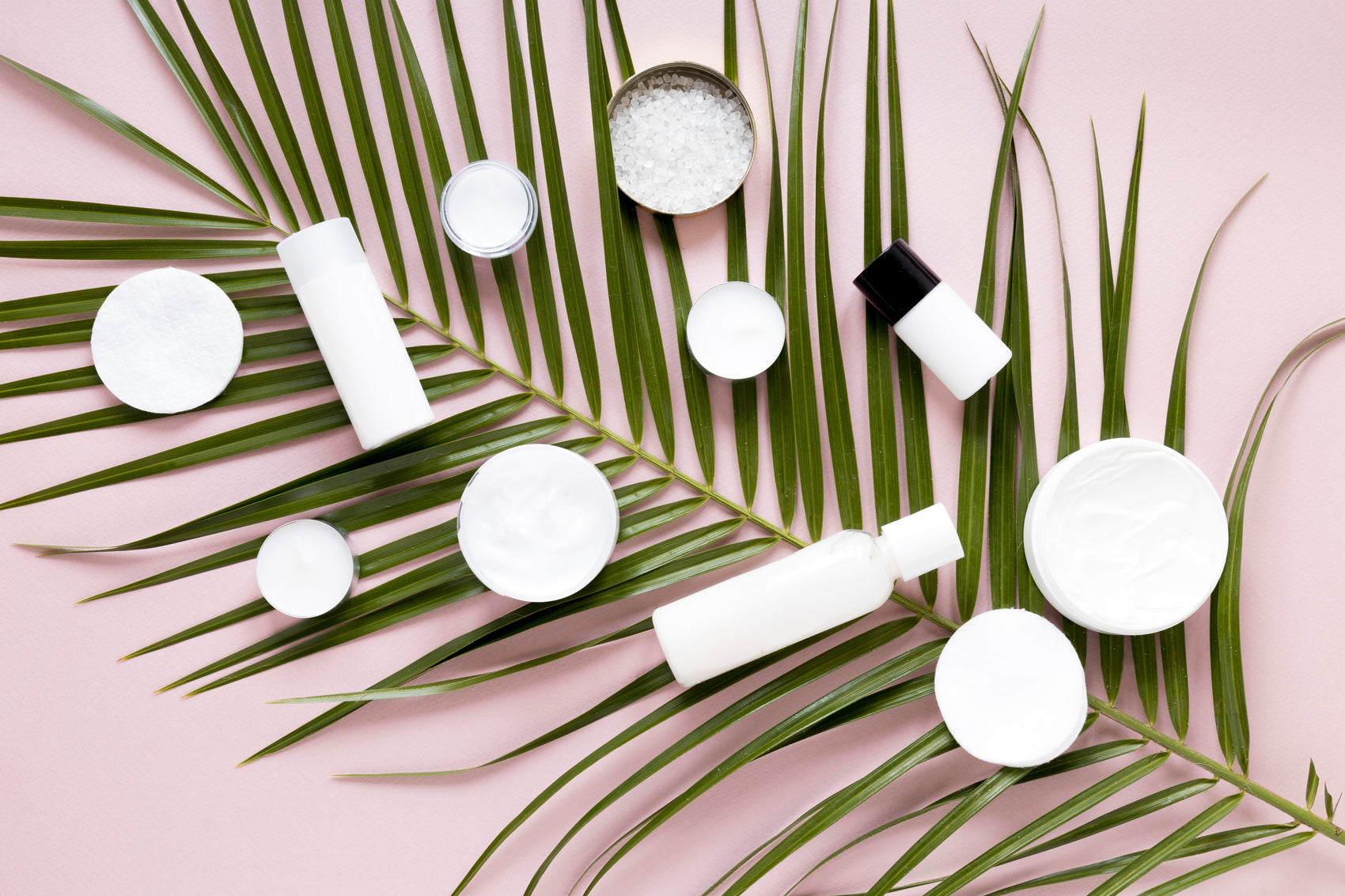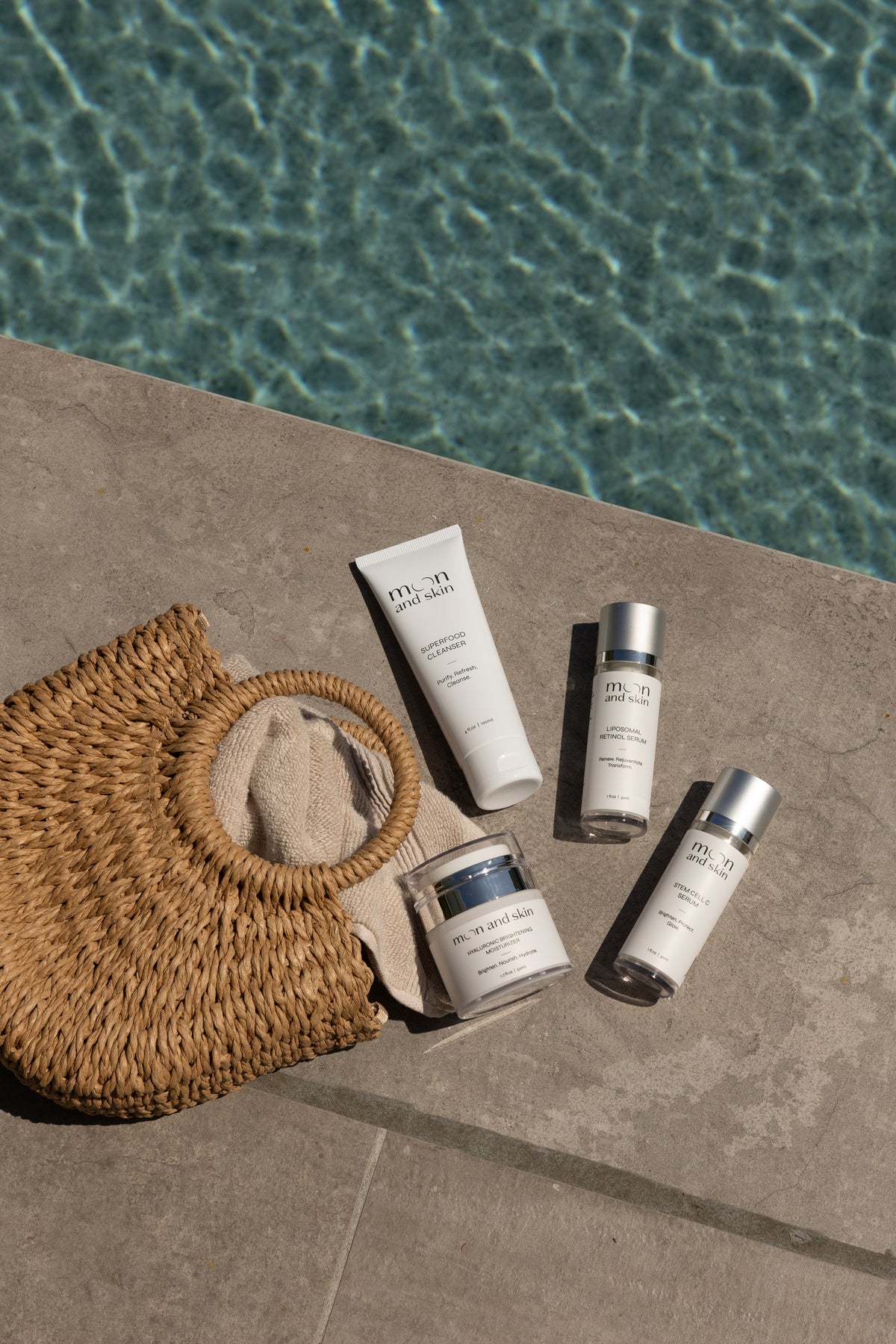Table of Contents
Introduction
Have you ever wondered why some skincare products tout green tea as a miracle ingredient? With its increasing popularity, many are curious about its benefits, especially for skin conditions like rosacea. Recent studies have drawn connections between dietary habits—including tea consumption—and the prevalence of this chronic skin condition. In fact, research indicates that certain types of tea drinking behaviors may be linked to a heightened risk of rosacea. Amid these findings, many seek natural remedies to soothe their skin, and green tea often emerges as a contender.
At Moon and Skin, we understand that navigating skincare can be overwhelming, especially when dealing with conditions like rosacea. We believe in the power of clean, thoughtful formulations and the importance of education in this journey. In this blog post, we’ll explore the potential benefits of green tea for rosacea, the science behind its properties, and how to integrate it into your skincare routine. We’ll also highlight our Stem Cell C Serum, which incorporates advanced plant-cell technology that can complement green tea’s benefits.
So, is green tea good for rosacea? Let’s dive in and find out together!
Understanding Rosacea
Before we discuss green tea, it’s essential to understand what rosacea is and its common triggers. Rosacea is a chronic inflammatory skin condition characterized by redness, flushing, and sometimes bumps resembling acne. Affecting approximately 5-10% of adults, it often appears on the face, particularly in fair-skinned individuals.
Common Symptoms of Rosacea
Rosacea manifests in various ways, including:
- Flushing and redness: Persistent redness in the central part of the face.
- Visible blood vessels: Small blood vessels become prominent.
- Bumps and pimples: Similar to acne, these can be sore and tender.
- Thickened skin: In more severe cases, skin can thicken, especially on the nose.
Triggers of Rosacea
Understanding triggers is crucial for managing rosacea effectively. Common triggers include:
- Environmental factors: Sun exposure, extreme temperatures, and wind.
- Dietary choices: Spicy foods, alcohol, and hot beverages.
- Skincare products: Harsh ingredients, fragrances, and exfoliants.
- Stress: Emotional stress can exacerbate symptoms.
Identifying your personal triggers can help in crafting a skincare routine that minimizes flare-ups.
The Role of Green Tea in Skincare
Green tea, made from unfermented tea leaves, is rich in antioxidants, particularly catechins. These compounds are known for their anti-inflammatory properties, making them a potential ally in managing rosacea symptoms.
Antioxidative Properties
The antioxidants in green tea combat free radicals—unstable molecules that can cause skin damage and inflammation. By neutralizing these free radicals, green tea helps protect the skin from oxidative stress, which is particularly beneficial for individuals with rosacea.
Anti-Inflammatory Effects
Research indicates that the polyphenols in green tea possess anti-inflammatory properties that can soothe irritated skin. In a study published in the Journal of Investigative Dermatology, it was revealed that topical applications of green tea extract led to a significant reduction in inflammation and redness.
UV Protection
Sun exposure is a known trigger for rosacea flare-ups. Green tea has been shown to provide some degree of UV protection, making it a helpful addition to your skincare routine, especially when paired with a broad-spectrum sunscreen.
How to Use Green Tea for Rosacea
Incorporating green tea into your skincare regimen can be simple and effective. Here are a few methods:
1. Green Tea Infused Products
Look for skincare products containing green tea extract. Our Hyaluronic Brightening Moisturizer is a perfect example, combining deeply hydrating ingredients with the benefits of antioxidants.
2. DIY Green Tea Mask
Create a soothing mask at home:
- Brew a cup of green tea and let it cool.
- Mix with honey for its antibacterial properties.
- Apply the mixture to your face for 15-20 minutes, then rinse.
3. Green Tea Compress
A cold green tea compress can provide immediate relief during a flare-up:
- Brew green tea and refrigerate until cold.
- Soak a clean cloth in the tea and place it on the affected areas for 10-15 minutes.
Integrating green tea into your skincare routine can help soothe and protect your skin while complementing other treatments.
Complementing Green Tea with Other Skincare Ingredients
While green tea offers numerous benefits, combining it with other powerful ingredients can enhance its effectiveness. Here are a few key ingredients to consider:
Vitamin C
Vitamin C is known for its brightening properties and its ability to combat oxidative stress. Our Stem Cell C Serum features a stable, acne-safe form of vitamin C that can work synergistically with green tea to help reduce redness and promote an even skin tone.
Retinol
Liposomal retinol is another ingredient worth considering. It provides the benefits of retinol with minimal irritation, making it suitable for sensitive skin. Our Liposomal Retinol Serum can aid in skin renewal while complementing the calming effects of green tea.
Hydration
Keeping the skin hydrated is crucial for those with rosacea. Our Hyaluronic Brightening Moisturizer provides deep hydration while including kojic acid for brightening, making it an excellent choice for moisturizing after green tea treatments.
Lifestyle Tips for Managing Rosacea
In addition to incorporating green tea into your skincare routine, lifestyle changes can significantly influence rosacea management. Here are some tips to consider:
Diet
Embrace an anti-inflammatory diet rich in fruits, vegetables, whole grains, and healthy fats. Foods high in omega-3 fatty acids, such as salmon and flaxseeds, have been shown to reduce inflammation.
Stress Management
Practice stress-reduction techniques like yoga, meditation, or deep-breathing exercises. Finding ways to manage stress can help minimize flare-ups.
Sun Protection
Always use a broad-spectrum sunscreen daily. Mineral-based sunscreens are often best for sensitive skin and can help protect against UV-triggered rosacea symptoms.
Conclusion
In conclusion, green tea is indeed a promising option for managing rosacea symptoms due to its antioxidative and anti-inflammatory properties. However, it’s essential to remember that no single ingredient will provide a cure for rosacea. A holistic approach, including suitable skincare products, dietary modifications, and lifestyle changes, will empower you to manage your condition effectively.
At Moon and Skin, we believe in celebrating your skin through all its stages. Our Bundle & Save collection allows you to combine our core products for a comprehensive skincare routine that works harmoniously with nature. Explore our offerings, including the Hyaluronic Brightening Moisturizer and Stem Cell C Serum, to find the perfect fit for your skin’s needs.
FAQ
1. Can I drink green tea if I have rosacea?
Yes, drinking green tea may offer additional benefits due to its antioxidants. However, monitor your body's response, as hot beverages can sometimes trigger flushing.
2. How long does it take to see results from using green tea on my skin?
Results can vary, but many notice improvements within a few weeks of consistent use. For best results, integrate it into a broader skincare routine.
3. Can I use green tea products every day?
Most people can safely use green tea-infused products daily. Always perform a patch test first to ensure there is no sensitivity.
4. Are there any side effects to using green tea on my skin?
Green tea is generally well-tolerated. However, if you experience any irritation, discontinue use and consult a skincare professional.
5. What are other natural remedies for rosacea?
In addition to green tea, consider aloe vera, chamomile, and honey for their soothing properties. Always choose gentle, non-irritating ingredients for your skincare routine.
Together, we can navigate the journey of skincare and embrace every phase of life with confidence!







